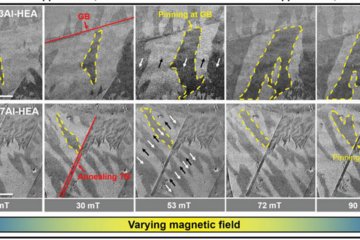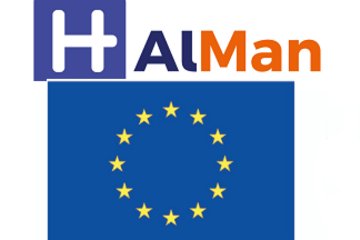All genres
1.
Journal Article
Effects of transformation-induced plasticity on the small-scale deformation behavior of single crystalline complex concentrated alloys. Scripta Materialia 176, pp. 122 - 125 (2020)
2.
Journal Article
In situ observations of single grain behavior during plastic deformation in polycrystalline Ni using energy dispersive Laue diffraction. Materials Science and Engineering A: Structural Materials Properties Microstructure and Processing 772, 138778 (2020)
3.
Journal Article
Synthesis and mechanical testing of grain boundaries at the micro and sub-micro scale. Materialprüfung / Materials Testing 61 (1), pp. 5 - 18 (2019)
4.
Journal Article
Dislocation slip transmission through a coherent Σ3{111} copper twin boundary: Strain rate sensitivity, activation volume and strength distribution function. Acta Materialia 161, pp. 412 - 419 (2018)
5.
Journal Article
On the nature of twin boundary-associated strengthening in Fe–Mn–C steel. Scripta Materialia 156, pp. 27 - 31 (2018)
6.
Journal Article
Strain rate dependence of the slip transfer through a penetrable high angle grain boundary in copper. Scripta Materialia 138, pp. 88 - 91 (2017)
7.
Journal Article
Dislocation interaction and twinning-induced plasticity in face-centered cubic Fe–Mn–C micro-pillars. Acta Materialia 132, pp. 162 - 173 (2017)
8.
Journal Article
Dislocation-twin boundary interaction in small scale Cu bi-crystals loaded in different crystallographic directions. Acta Materialia 129, pp. 91 - 97 (2017)
9.
Journal Article
Size effect in bi-crystalline micropillars with a penetrable high angle grain boundary. Acta Materialia 129, pp. 312 - 320 (2017)
10.
Talk
Dislocation - Grain Boundary Interactions Probed by In-Situ Micromechanical Experiments. 55th Annual Technical Meeting, SES2018, Madrid, Spain (2018)
11.
Talk
Dislocation Transmission Through Grain Boundaries: Insights from In-Situ Micromechanical Experiments. Materials Science & Technology (MS&T) 2018, Columbus, OH, USA (2018)
12.
Talk
Quantifying dislocation slip transmission by in situ micromechanics. ICSMA 2018, Ohio State University, Columbus, OH, USA (2018)
13.
Talk
Nondestructive 3D information on dislocation density and elastic strain in deforming micro-fatigue specimen. ESMC 2018, Bologna, Italy (2018)
14.
Talk
Deformation of nanotwinned silver by micropillar compression. EMRS Spring Meeting, Strasbourg, France (2018)
15.
Talk
Strain rate sensitivity of dislocation transmission through individual copper grain boundaries. E-MRS Spring Meeting 2018, Strasbourg, France (2018)
16.
Talk
Dislocation interaction and twinning-induced plasticity in face-centered cubic Fe–Mn–C micro-pillars. MRS Fall Meeting , Boston, MA, USA (2017)
17.
Talk
Dislocation interaction and twinning-induced plasticity in face-centered cubic Fe–Mn–C micro-pillars. MECANO General Meeting, Toulouse, France (2017)
18.
Talk
Quantifying dislocation slip transfer by in situ micromechanics. MRS Fall Meeting 2017, Boston, MA, USA (2017)
19.
Talk
Towards probing the barrier strength of grain boundaries for dislocation transmission. Electronic Materials and Applications 2017, Orlando, FL, USA (2017)
20.
Talk
Do we understand dislocation transmission through grain boundaries? PICS meeting, Luminy, Marseille, France (2017)











